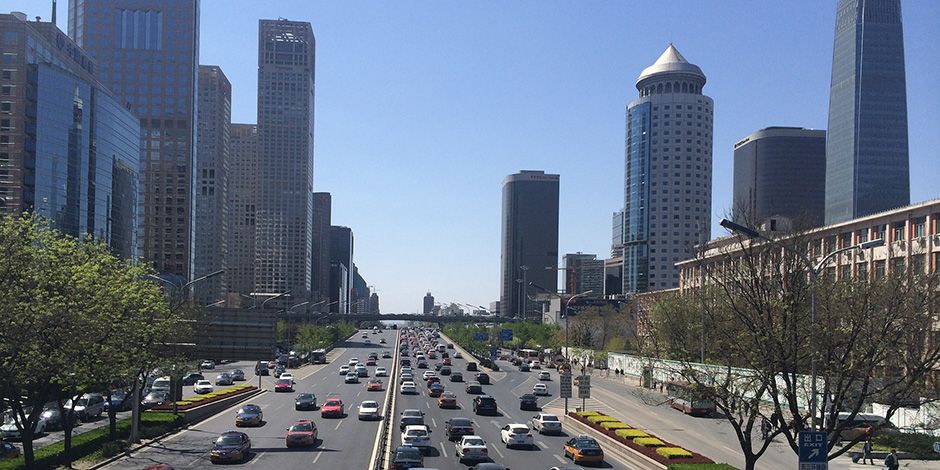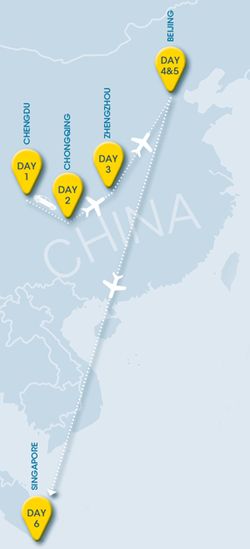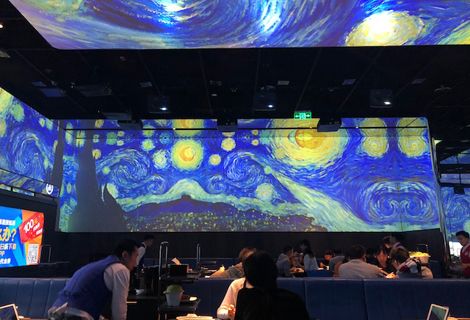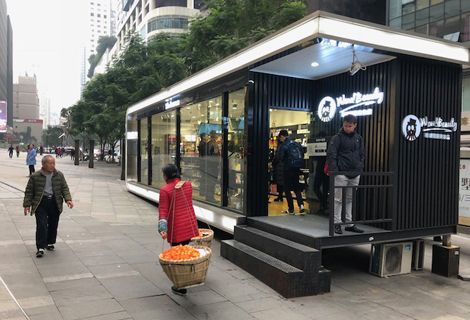
Janus Henderson: China - notes from the road
Charlie Awdry, China equities portfolio manager, gives a first-hand insight into the culture, company dynamics and consumer trends experienced during his recent research trip to China.
12.02.2019 | 11:27 Uhr
Day 1: Chengdu
Meeting with baijiu distributors
We met with distributors of baijiu - a range of strong, transparent Chinese liquors made from grain, which literally translates as ‘white alcohol’.
The distributors we met act as the middle men between retailers and established baijiu brands so their profitability is determined by managing fluctuating demand and margins that are dependent on the gap between ex-factory and wholesale prices. 2018 was a tough year for the industry, which is being squeezed by a campaign to reduce levels of debt, limiting sources of funding for business growth. Ex-factory prices1 are also rising just as retail demand is softening. The extreme cyclicality of retail pricing can hurt both distributors and retailers.
Unlike almost all other retail segments that have been fundamentally altered by the rise of e-commerce and smartphones, baijiu remains a relationship business with an unreformed and undisrupted supply chain. Our discussions, therefore, focused on the management, sales strategy and pricing at key baijiu companies, particularly on the change of leadership at one of these companies and the hope for improved business relationships in 2019.
Lunch at a branch of Pizza Hut
The aim of our visit was to understand how a western brand continues to adapt to regional preferences. The answer seems to be to keep the consumer interested and engaged with regular changes to the menu. The latest success story in spicy cuisine in Chengdu is a prawn and chilli pizza, for example.
The managers here are pleased that they do not face competition from other western brands, such as Domino’s and Pizza Express, unlike their colleagues in more developed eastern cities like Shanghai.
As e-commerce has taken share, shopping malls have filled their empty shop space with more food and beverage offerings, so competition is fierce. Outlets must be price competitive and preferably offer plenty of voucher-driven discounts. As an example of this in action, discount vouchers were thrust into our hands by a McDonald’s employee as we stood outside KFC!
Visit to a hypermarket operator
On our visit to a hypermarket operator, the management was very positive on the new business trends driven by joining forces with an electronics retailer and leading e-commerce player, Alibaba. The deal increases their local online businesses significantly and allows them to use their warehousing infrastructure more efficiently. Our experience with the company contrasts with a much more ‘local’ supermarket operator, where our meeting was conducted in a crowded office next to their poorly stored inventory.
The day finished with a four and a half hour drive to Chongqing, arriving at the hotel at 11.30pm. Why we didn’t take the high speed train, I don’t know…
Day 2: Chongqing
Further due diligence on the baijiu industry
Two more distribution meetings followed; it was interesting to meet with people who work for different brands and note the contrasts in strategy. What they did all agree on, however, was that low-end consumers are trading up and spending more money.
Meeting with a local beer executive
We met a local beer executive to explore the impact of a merger and acquisition deal that has allowed a Chinese company to introduce Heineken more aggressively into the local market. The company will be competing against Carlsberg, which has built up a very strong market position over many years.
The meeting allowed us to gain a better understanding of promotional activity and how the beer market is segmented between consumers. In China, beer is generally not consumed at home and cans have only recently been introduced. If the consumer can be persuaded to move from bottles to cans, logistical costs should fall dramatically and this would boost profitability.
The day ended with a flight to Zhengzhou in Henan province. Never heard of it? Well, it’s where 400, 000 workers assemble iPhones, and its government is keen to promote growth through free trade zones.
Day 3: Zhengzhou
Visit to a pork product company
We spent the day in the company of an executive from a pork product company. We discussed food safety, consolidation in the industry, pricing opportunities driven by their national scale and the limitations of transporting live hogs versus food products. We saw the entire animal dispatch and meat treatment process. We also viewed, and sampled, their new product portfolio. Afterwards, the executives hosted an excellent lunch, showcasing local cuisine.
We then flew to Beijing.
Day 4 and 5: Beijing
Interactive dining
We spent two days meeting companies and visiting retail outlets, during which time we ate in a very popular hotpot restaurant chain Haidilao, which is newly listed on the Hong Kong Stock Exchange.
The company has taken the traditional hotpot cuisine concept and given it a modern twist, with robots helping to deliver plates, extremely high levels of customer service and some fantastic dining room settings. Animations of solar systems and paintings – including The Starry Night by Van Gogh – were projected onto the walls and ceilings of our restaurant:
Source: Janus Henderson Investors
The company has a rapid national expansion plan and highly incentivised management structure.
Visiting new retail formats
Our visit endorsed the view that e-commerce is moving into a new, highly competitive stage with a penetrated customer base and powerful social media channels. Costs have come full circle and e-commerce tools are now returning to offline stores, but in new retail formats. Maybe Alibaba’s Jack Ma is right about the convergence of retail into new retail and omni-channels.
An interesting example of the new formats was a sports clothing company that has incorporated workout areas upstairs in an effort to generate a more intimate brand experience. Such brands are becoming more fashion-orientated and are bringing in a contemporary ‘London Shoreditch-style’ image that they never discount – this is very unusual in China.
Another example, as shown in the image below, was a ‘semi-automated’ (one employee) concept store outside a mall in Chongqing, a major city in South West China.
Source: Janus Henderson Investors
We then flew to Singapore to spend time with colleagues in Janus Henderson’s office there, before flying home to London.
Glossary:
1 ex-factory price: the cost a manufacturer charges for distributors or other buyers to purchase its products, excluding shipping or taxes.







Diesen Beitrag teilen: